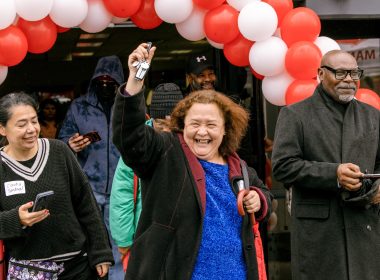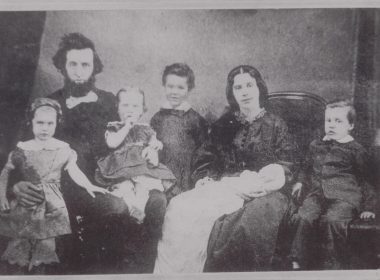A look at where we stand in relation to the six strategic priorities
by Robert Docter –
The Salvation Army USA Western Territory is a system—a giant, complex, open system. Within it are a number of identifiable sub-systems that operate with varying levels of autonomy at varying times. Such systems are very difficult to assess. Maybe that’s why we’ve never done it. The Army has looked at pieces of the system—parts that function together. I don’t recall that anyone ever made an attempt to analyze the entire system. We need to, but we’re not going to do that here. We are, however, going to explore aspects of that system and continue a process initiated two years ago.
Commissioner Linda Bond has directed New Frontier to “hold our feet to the fire.” We interpret that directive as asking us to take a straightforward, unbiased, unfettered look at the Territory’s effort to achieve a measure of change in relation to six identified strategic priorities. These priorities imply the need for some different goals. Many people have been working diligently for almost two years in examining perceived needs, exploring visible problems, and trying to communicate with diverse populations about these six strategic priorities. The October 11, 2003 issue of New Frontier provided a full report and a precise evaluation of the first year’s effort in examining these priorities. Now, ten months later we provide an update of current progress and accomplishments since that initial review.
New Frontier has been “outside” the loop in this process. There-fore, we assume the role of the outside observer—and make our observations known to all interested readers.
The process.
As the Territory began consideration of the six strategic mission priorities, three assessment and planning groups emerged to examine aspects of each priority. One drew on skills within the various Program departments, and this group took the lead on four of the priorities. A second focused on Personnel considerations within each of the priorities and drew on skills within the Personnel Departments. This task force took the lead on one of the priorities. A third task force concerned itself with economic issues within each of the priorities and drew widely from the skills of a number of experienced people. It, also, took the lead on one of the priorities.
Each of these groups augmented their membership with additional help from invited laypersons and officers from the field plus expert consulting assistance from a number of different disciplines. Additionally, each appointed sub-committees to address particular tasks.
As their names implied, these groups were involved in planning strategy. This involves large scale planning – big thinking to accomplish major objectives. Rarely, were these objectives evident in the reports. In some instances, they moved quickly to implementation tactics and a recommendation became operational policy. In other instances, continued consultation and study seems to be required prior to implementation.
A comment on the Army’s approach to change – past, and present.
In past years the Army approach to dealing with what is perceived to be a necessary change of some kind is to move quickly toward some “first level” remedy in the absence of almost any data. Most often, the remedy selected has tended to be based on hunches, observations of a single or limited sample, or the best judgment of an individual leader or a small group of delegated workers. Rarely has it involved data or problem analysis. The approach used currently, however, shows a ready willingness to depart from this “traditional” approach. There is a strong link in the current effort to build on the mission and vision planning in which the Territory engaged for several years. There has been intensive analysis of the vision statements from which the problems to be solved were identified, and most importantly, there is a strong commitment to action and evaluation.
Criteria used to evaluate the progress.
New Frontier used the following criteria to evaluate the progress to date:
1. The effectiveness of the planning process.
a. Were multiple publics consulted in examining the priority?
b. Were problems pertaining to the priority clearly identified?
c. Were broad goals established in relation to the problems?
d. Were hypotheses relative to goal attainment developed?
e. Were data gathered to test the validity of the hypotheses?
f. Were conclusions made and recommendations written on the basis of this evidence?
2. Will the recommendation result in action at the appropriate change level?
a. (First order change) The recommendation does not require actual systemic change in the way the organization functions unless similar or parallel recommendations have been tried in the past.
b. (Second order change) The recommendation requires an actual systemic change and, therefore, the means to modify the structure of the system needs to be identified. Usually, this requires a change in the rules.
3. Will the recommendation assist the organization achieve its mission more effectively through one or more combinations of the following?
a. facilitating growth in key statistical areas
b. developing tools or techniques to assist mission workers
c. providing improved education for leaders or soldiers
d. increasing public awareness of the Army and its total mission
e. improving means and approaches to resource management and fundraising
f. developing means to facilitate improved communication within the organization’s various levels
g. significant system change
4. A sense of urgency exists, and on a scale of 1-10 with ten high, what appears to be the “readiness for action” pertaining to matters surrounding the recommendation?
Status ratings.
New Frontier will apply the following status ratings in relation to the planning process to date:
VERY EFFECTIVE – meets most of the criteria
MODERATELY EFFECTIVE – meets some of the criteria
NEEDS MORE WORK – insufficient information to assess
Assessment of the recommendations.
MAKE THE FIELD A PRIORITY
Problems implied by the priority.
• The “field” has not been a priority of sufficient magnitude to date.
• The “field” is where the action is in the Army. It is the front line.
• Existing Army policies and procedures somehow have inhibited the “field” from accomplishing its mission
NOTE: The term “field” may confuse readers. New Frontier infers that it is a broad term to denote any Army program apart from a headquarters unit. It does not imply a “special” designation for these units but simply recognizes that non-field units are administrative, coordinative, and supportive of the “field” units.
Work in Process
1. A corps standard is being developed with divisional participation. It is designed to achieve a balanced ministry that reflects our full mission and sets clear expectations.
VERY EFFECTIVE
2. Specific tools to measure the health of a corps are valuable and necessary. Army congregations currently use Evaluating the Harvest. An additional tool, the Natural Church Development survey also provides specific data designed to lead to action plans to achieve greater health.
VERY EFFECTIVE
3. Helping corps achieve greater financial support through a corps snapshot financial summary that includes data on tithing in relation to corps expenses.
VERY EFFECTIVE
4. A territorial policy for corps revitalization, closing or pruning, and planting is in the process of development.
VERY EFFECTIVE
5. Greater in-depth analysis of corps statistics, their relation to demographics and outcome evaluation continue development.
VERY EFFECTIVE
Accomplishments to date.
1. The Territory is sponsoring up to three sites in each division for the “40 Days of Purpose” in the fall. VERY EFFECTIVE
2. All divisions and local corps will have access to demographic data within their service area through a contract with Percept.
VERY EFFECTIVE
(Training essential)
3. A web based Corps SnapShot has been developed to provide key information to decision makers concerning ministry units. It will refined to included units beyond the corps
VERY EFFECTIVE
(Training essential)
4. The Mission Team Ministry approach confronts the problems of corps officers being required to assume so many different roles. Officers with different gifts and abilities will work together either in one location or in multiple locations
MODERATELY EFFECTIVE
5. The international Lieutenants program has been implemented and 12 Lieutenants have been assigned to the field
VERY EFFECTIVE
PROMOTE HOLISTIC MINISTRY
Problems implied by the priority.
• The term “holistic ministry,” a fundamental concept in both the Army’s unique approach to ministry and its total identity, is neither well known nor understood by Army membership, employees, volunteers or the general public.
• The Army’s spiritual and social ministries often exists with minimal communication between the programs that need to operate in complete harmony.
• If the “disconnect” continues, the Army may return to its organizational design of the early twentieth century. At this time two separate entities, the “church wing” and the “social wing,” were linked only at the very top – not at all in practice.
• In the face of our mission statement and our historic commitment to social redemption, we tend to avoid using the power of our “prophetic voice” in speaking out more forcefully on matters of social justice for the marginalized and disenfranchised of our society.
• Despite the majesty of our heritage, many in our current Army resist perceiving the “unlove” inherent in poverty, racism, sexism or homophobia.
Work in process.
1. Models of holistic ministry appear regularly in New Frontier and Caring magazine. VERY EFFECTIVE
2. The change in title from League of Mercy to Community Care Ministry can focus greater emphasis on visits and care for neighbors and promote greater emphasis on relational ministry.
MODERATELY EFFECTIVE
3. Three Departments in the Program Section, Corps Ministries, World Missions and Youth are working to clarify “holistic ministry” and finding current examples where it is occurring naturally.
MODERATELY EFFECTIVE
4. Outcome evaluation, currently in development at UCLA, may provide information helpful for both program design and evaluation.
VERY EFFECTIVE
5. The Youth and World Ministries Departments are strategizing to create mission opportunities in inner-cities and overseas.
VERY EFFECTIVE
6. While the Mission Team Ministry program has not focused on this priority, it does have the potential to facilitate its development.
MODERATELY EFFECTIVE
MAKE MINISTRY TO YOUTH A PRIORITY
Problems implied by the priority.
Statistics reveal a declining involvement in Army programs by youth.
Work in Process.
1. The Territory is supporting and endorsing program components that contribute to a balanced program for community “at risk” children. These include: HopeShare, eQuip for Success computer labs, Safe from Harm, and Arise Foundation life skills.
VERY EFFECTIVE
2. Family ministry is encouraged and added to corps standards.
MODERATELY EFFECTIVE
3. Only five corps in the Territory have not reported Sunday School statistics.
MODERATELY EFFECTIVE
4. In the next fiscal year seven corps may apply for three years of funding to employ a competent youth worker to assure a balanced and growing youth ministry in the corps.
VERY EFFECTIVE
5. The use of the “Developmental Assets” approach encouraged in evaluating youth programs. VERY EFFECTIVE
CAST A GLOBAL VISION
Problems implied by the priority
• We need to do more for the world – primarily in non-monetary terms
• We need to be better informed about the needs of people around the world
• We need to be more aware of the problems of immigrants and other marginalized individuals in our communities – especially in matters related to any form of discrimination.
• The education of cadets and of those anticipating mission involvement need to include all aspects of a broader worldview.
Work in process.
Recommendations
1. Facilitate the development of a Missions Conference (SOAR) for October 2005.
NEEDS WORK
2. Continue involvement with IHQ, the IHQ Health Secretary and SAWSO to strengthen learning and develop relationships to respond to requests as appropriate.
NEEDS WORK
3. Maintain strong links with Crestmont in relation to cadet education and leadership development programs.
NEEDS WORK
Achievements
1. Nuevas Fronteras nears completion of its first year of publication.
VERY EFFECTIVE
2. A successful multi-cultural conference was held at Crestmont in conjunction with the SOAR seminars
MODERATELY EFFECTIVE
3. The multi-cultural committee made a presentation to the Appointments Board and made specific recommendations.
VERY EFFECTIVE
4. An ethnic diversity survey has been developed and will be presented to the Territory. These data can be helpful in shaping future officer education and decision making. It can be replicated at a later date to examine changes in the Territory’s diversity.
VERY EFFECTIVE
5. A Missions brochure has been developed.
MODERATELY EFFECTIVE
6. 50 delegates attended Urbana
VERY EFFECTIVE
7. Three divisions have mission trips in the planning process
VERY EFFECTIVE
8. A coordinating committee involving THQ Departments concerned with world missions has been created.
MODERATELY EFFECTIVE
IDENTIFY, TRAIN AND DEVELOP LEADERS
Problems implied by the priority.
• Cultural change and changing demographics demand shifts in existing personnel policies and practices.
• Broader representation and greater participation from laymen and field officers is needed in determining issues and developing personnel policies and practices.
• Officers in corps and social program administration face a complexity of roles that require greater assistance
• Length of appointments is a more critical matter now than in our past
• Recognizing that the appointment of an officer to a particular assignment does not immediately guarantee or certify essential knowledge and skill required to fulfill the demands of the assignment. The complexity of officership today requires continuing education on a regular basis.
Work in process.
Achievements.
1. The need to recruit officers was perceived to be a personnel function. Therefore, the position of Candidates Secretary was moved from the Youth Department to the Personnel Section. The title was changed to Recruitment/Candidate Secretary and an experienced officer appointed.
VERY EFFECTIVE
2. In Response to an International directive, an Appointment Board was created in 2002. It has established specific goals in relation to the number of officers who change appointments during a year and has been successful in reducing that number. It has also met with the Multi-Cultural Committee during the year. Other concerns related to best utilization of married women officer in headquarters appointments, and developing the Mission Team Ministry approach.
VERY EFFECTIVE
3. The Mission Team Ministry (MTM) program has confronted the assumption that every officer has all the skills necessary to be an “officer generalist.” An experimental program seeks to determine the best way for officers in common or near appointments to combine their skills in Army ministry. Five MTMs currently operate.
MODERATELY EFFECTIVE
4. The Officer Management System of record keeping has been modernized. This system has facilitated the development of an “Appointment Scenario Builder” to best match officers to appointments.
VERY EFFECTIVE
5. The Lieutenants program currently functions with 12 appointees. (See Priority #1).
VERY EFFECTIVE
6. A group of soldiers and officers form the Personnel Vision Task Force. They have been engaged in innovative thinking and planning around leadership development. One item considered and now implemented has been an improved continuing education program requiring every officer to have 24 hours of continuing education every two years.
VERY EFFECTIVE
7. A Cabinet level position of Secretary for Leadership Development has been created and an experienced officer assigned.
VERY EFFECTIVE
8. Newly appointed divisional leaders for three divisions have participated in a two- day training program examining their new responsibilities.
MODERATELY EFFECTIVE
DIRECT RESOURCES TO MISSION
ECONOMIC
TASK FORCE
Overlapping and stretching each of the strategic priorities and with a broad and inclusive definition of the term
“economic,” this task force, led by
the Territorial Secretary for Business Lt. Colonel Kurt Burger, was asked to examine the total administrative structure of The Salvation Army’s USA Western Territory. It is in the process of:
(1) undertaking an intricate analysis of how that structure facilitates or inhibits mission achievement;
(2) examining the process we use to function as an administrative entity, i.e. delegation of authority, planning, levels and methods of accountability; (etc.) and
(3) evaluating the manner in which we generate resources—our fundraising practices and the public relations policies and procedures that govern these efforts.
The Economic Task Force (ETF) organized itself around these three elements by subdividing into three groups Structure, Process, and Resources. Each subgroup was asked to define issues, develop research parameters and methodology and formulate recommendations.
Recognizing that considerably more discussion and research is needed, the task force has not moved toward submitting any final recommendations for acceptance or implementation. Instead, it has raised critical questions, examined existing paradigms and patterns describing how we work, and presented new, more effective ones to guide the formulation of recommendations.
The subgroups were required to filter each recommendation through four questions:
1. Does it reduce administrative overload on the field, i.e. is a corps officer’s or ARC administrator’s administrative function of such magnitude that it is done at the expense of ministry to people?
2. Does it reduce cost, thus recognizing the widening gap between income and expenses?
3. Does it make the process more efficient and more effective, working better, faster, cheaper?
4. Does it generate income?
Looking at the Army’s structure
Paradoxically, we are both a Christian movement and a large business with many of the assets and obligations of a business, but with a fundamentally different “product “and bottom line focus. Frontline officers enjoy a high degree of freedom to expand, innovate, be creative in fundraising, build large Sunday schools and congregations, (etc.). If this is true, but the anticipated results as articulated in our vision statement have not happened, are elements of our structure and administrative processes hampering our mission?
In light of this critical question, the task force examined the Army’s structure from four perspectives: (1) vertical—our relationships within the hierarchy—the distribution of power; (2) horizontal—issues surrounding matters of turf and territory; (3) external—examining boundaries between the Army and its donors, clients, customers, government, other service providers; (4) geographic—exploring boundaries between locations, cultures, administrative units.
No formal recommendations were generated, but some are being analyzed and researched in each perspective.
Discussion – our vertical structure.
• The issue to be resolved is to eliminate barriers to innovation and empowerment of officers, employ-
ees, board members and volunteers.
• Additionally, the management councils need examination to assure that they deal with substan-
tive matters, provide leadership and leave the rest to local levels.
Discussion – our horizontal structure.
• The subgroup explored how to maintain a focus on serving people, preaching and modeling the Gospel, and building collaboration designed to “get the job done” with individuals and horizontal
teams based on competence who are trusted and held accountable.
Discussion – our structure externally.
• We are perceived as a “significant player in human services,” but, also, as insular, isolated, and going- it-alone. This can result in the loss of input and feedback from outside sources. We need to increase our awareness of how the outside environment can assist us in accomplishing our mission.
Discussion – our structure geographically.
• Discussion in this area surrounded issues of cultural diversity and relationships between various administrative units—including the divisional structure of the territory. The task force emphasized the strengths of the divisional structure and searched for ways to assist its use of new technology and become more cost-efficient. A number of ideas surfaced relative to centralizing some functions within divisions designed to reduce administrative overload, reduce cost, become more efficient and generate additional income.
Looking at the
Army’s Process
This subgroup sought to identify some “guiding principles” to guide the development of recommendations leading to improved policies and procedures. It noted that: “Process within our existing form/structure is essentially sound but bloated, to some degree determined by tradition evolved by increasing need/desire to control risk instead of enhance function. Time, energy and money are disproportionately spent working through the system. Therefore, a mix of centralizing and decentralizing based on function rationale needs to be developed, and authority and responsibility need to be linked, at whatever level they are placed, and accountability has to be stronger.
We need to move from a “control and minimize risk” model to an “accountability” model based on guidelines, internal controls, standards, policies and procedures that provide freedom, and enhance evaluation strategies.
A framework for evaluating, streamlining and revising process.
Rather than presenting specific recommendations prior to resolving the structure and accountability issues, the subgroup sought to recommend a framework to be used at the appropriate time.
Some guiding principles.
1. Belief Systems
• Values and beliefs underpin the processes, policies and procedures an organization designs for its daily operation.
• Often, values are assumed rather than articulated and may cause confusion in guiding behavior.
Finding.
The Territory lacks a clearly defined statement of beliefs and values although such may be found in departments or divisions.
Discussion
• We need to clarify and articulate core values and align these values with behav-
iors that may determine the decision making process.
• Identify existing and new methods to consistently reinforce our beliefs and values.
2. Diagnostic Control System
• A well developed and applied diagnostic system provides “signals” about organizational health that represent important dimensions of performance. These include: performance measurements, goals and targets. Diagnosis should assist personnel in measuring, monitoring and realigning.
• Process must obviously be designed in such a way that it assists in reaching goals while at the same time protecting the organization.
Discussion
• Commands will identify significant performance goals and objectives in both divisional and corps evaluations. This could vary evaluation designs among the units depending on the variance in goals and objectives.
• That key indicators and outcomes be developed while avoiding the unintended consequence of violating other values due to pressure for results.
• That meaningful rewards be provided for achieved targets.
3. Internal Control System
• A well-developed internal control system safeguards critical assets of the organization.
• An acceptable “cost of doing business” is identified and maintained.
• Strong systems and controls are in place governing all financial operations and their integration with budgeting, decision-making and territorial objectives and strategic goals.
Finding
We have a first class accounting/financial management system, but officers and employees still need additional training in the value, nature and application of internal control policies and procedures.
Discussion
• Prepare officers and employees to value, apply and support the implementation of internal controls.
• That a clear process for partial year evaluation and realignment (at four months—January 31) be established to recognize the implications of fundraising over this period.
• That the tools for adequate cash flow management are accessible, comprehensible and implemented by those in leadership.
4. Boundary Systems
• A boundary establishes rules (policies and procedures) regarding the way we conduct the business of our ministries and identifies actions that are unacceptable in pursuit of the mission.
Findings
• Currently employee boundaries are reasonably well established through the employee handbook. Officer boundaries are primarily related to moral infractions and policy violations.
• Corporate legal restraints are well defined. We are supported by strong territorial and national policies and procedures.
• Codes of conduct and ethics are not defined for the whole, but are singularly related or borrowed for specific activities such as social workers.
Discussion
• The Army’s Ethics Center can assist us in developing codes of conduct and ethics and a system for communication and implementtion.
• Periodic ethical review can be inserted into the work of decision-making boards or councils at various organizational levels with documented findings.
• We need to review current policies and procedures.
5. Interactive Control System
• An interactive control system enables top level personnel to focusing on major factors and respond proactively through regular communication with field personnel in relation to various situations and problems.
Finding
The Territory’s tendency is to respond reactively rather than proactively—responding to disaster rather than focus on prevention. This results in arbitrary or subjective decision-making and hinders the ability to empower the field.
Discussion
• The development of fully comprehensive strategic and operational plans by divisions when presented to THQ and mutually accepted can form the basis for potential increase in delegation of authority and empowerment.
• A similar model could be instituted between corps and DHQ or other units and their command.
• Annual evaluations would need to work from the agreed upon plans.
Linking Authority, Responsibility and Accountability
The subgroup recognized the value of linking authority, responsibility and accountability and stands ready to develop a series of optional models should the structural elements be in place that would allow such a direction to occur.
Looking at the Army’s Development of Resources
The Resource Development subgroup examined fund raising practices, public relations and our policies and procedures governing our fund raising efforts. The group was assisted on specific subjects by two consulting firms.
Discussion
• The subgroup perceived a need for a new model of development that would address all the disciplines of development.
• It seeks to commit full to developing our capital campaign potential—possibly by establishing a territorial director for such campaigns. The office would be responsible for training and mentoring, needs assessment, feasibility studies, strategic planning as well as the campaign itself.
• The group expressed interest in strengthening advisory boards—possibly with the development of a series of mini-advisory conferences.
• The development of “E-Ministry” or “E-Development” could assist Army fund raising programs.
We need to be more effective at marketing the strong brand name of The Salvation Army.
• Provide the ARCC more latitude in developing new sources of funding—i.e. foundations, corporate gifts and partnerships. Such latitude could increase income through adding an additional day per week to thrift store sales, creating an endowment to cover rehabilitation services expenses, and market more broadly sign space on ARC trucks.
• Mentor, train, reward and hold accountable the various development functions through measurable performance standards.
• Examine the development of key internal benchmarks for direct mail performance.
• Create a divisional coalition to identify fundraising opportunities with the highest return on investment and eliminate any current activities that do not meet the baseline figure.
• Investigate the feasibility of owning a print production facility in order to reduce direct mail expenses.
Press hard for a national marketing plan designed to assist local fundraising.
ETF summary
The Economic Task Force has constructed a brilliant foundation on which this Territory can build a significantly improved operating structure. This beginning effort can focus our planning for “deep” change and reveal to us those elements that may be undertaken through more modest change.
The same foresight and courage with which the Task Force began their work now needs to be shared by other decision makers throughout the Territory, by line officers and employees whose work may be impacted by the change, and by soldiers and advisory board members when finally implementation reaches local levels.
Movement toward assessing the structure and process of our Territory to determine if change is necessary to make our mission more effective.
HIGHLY EFFECTIVE
Some final thoughts on the total report.
We may be living through an important cultural change in the Western Territory. Paradigms are changing. Visioning may be actualized. Energy has been released. Competent people are engaged in important tasks.
The reports to the Territory by the Program and Personnel Sections and by the Economic Task Force represent strategies and goals that can become a new beginning for this Army of the West. Some recommendations are minor – some will require major shifts within multiple systems – and all will assume loyal and committed energy by all of us on behalf of a continued mission focus.
We are at the outset of something new that can make our Army better. Let us not grow weary in well doing.










